What is the underlying message of “Downton Abbey”?
Quick Answer: With an expansive cast and plenty of personal drama, Downton Abbey has a tremendous amount of storylines flowing through its core narrative. But the driving force behind most of these stories, and the show’s narrative arc at large, is an examination of tradition versus progress. Each character undergoes an evolution which reflects the changing times of the early 20th century.
Asking the uninitiated what Downton Abbey (2010-2016) is about typically elicits a response along the lines of “snobby English rich people…doing things.” That simplistic assessment isn’t completely untrue. But while Downton Abbey’s storylines may not be filled with action and suspense, it is a dramatic and poignant examination of culture, classism, society, and the tension between between tradition and progress.
The series opens with an event which serves as a thematic framing device for the whole run: the sinking of the Titanic in 1912. The ship’s demise foreshadows the fates of English houses like Downton, which find themselves sinking as the series moves forward. In the case of the Titanic, a hurried desire to build the grandest, largest, unsinkable ship allowed for oversight on obvious life-saving security measures. At the same time, old-fashioned aristocratic institutions like Downton, which were resistant to change, faced the flipside of that problem as the rapidly evolving world of the 1910s and 20s threatened their very existence. Opening with the Titanic introduces the series’ primary thematic thread – that progress is inevitable, but you can’t disregard the past. Tradition is always relevant.
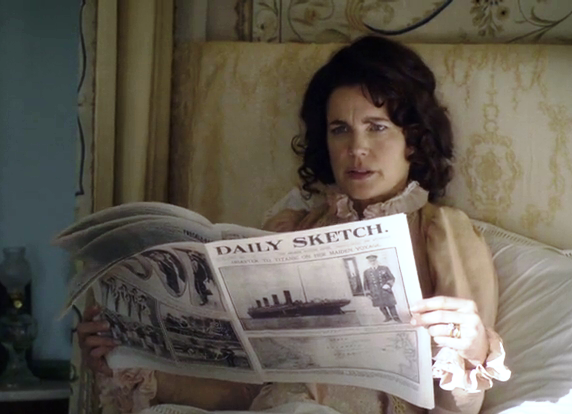
Cora (Elizabeth McGovern) reads about the Titanic
The events of Downton unfold between 1912 to 1926, a time period that was characterized by this tension. Centuries-old values are accosted by rapidly-evolving modernity. When the family gets a telephone, everyone stares at it from a safe distance. When electric mixers and gramophones show up, it seems that the world has stood on its head. And the notion that any of the ladies of a great house would go out into the world to seek employment is unimaginable. The family’s hesitation to embrace progress is comical to the 21st century audience; yet, coping with progress while holding onto tradition is not just an early 20th century problem. In different contexts, we do it every day.
Downton weaves this external tension into most of its major plot lines. Each of the primary characters experiences has a number of different story arcs throughout the six-season run, but each arc is connected to this larger conflict.
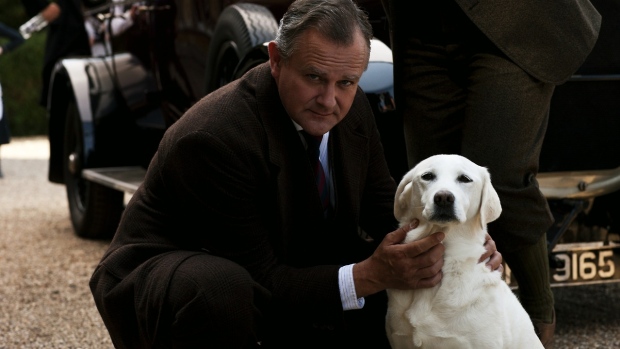
Robert (Hugh Bonneville) and his dog Isis
Consider Robert (Hugh Bonneville), head of a house that has existed for centuries. His reluctance to accept new ideas and operate the house’s affairs outside the constraints of tradition nearly leads to its closure. He is forced to accept the innovative new ideas of his daughter Mary (Michelle Dockery), his son-in-law Matthew (Dan Stevens) and his son-in-law Tom Branson (Allen Leech) and to relinquish dominant control over the estate’s affairs. Meanwhile, other old families steadfast in their desire to stick with what they know eventually found themselves without a home.
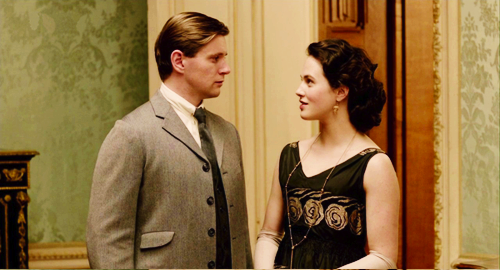
Tom Branson (Allen Leech) and Lady Sybil (Jessica Findlay-Brown)
Son-in-law Tom Branson, a self-proclaimed radical socialist, only gains an opportunity to help shape to Downton’s future by marrying a Lady of the house. The rebellious Lady Sybil (Jessica Findlay-Brown) finds following tradition to be less appealing than following her heart and marries Branson. The Crawley family comes to terms with this change of status and accepts Branson into the house as an equal, eventually owing much of their survival to his innovative thinking. This contention between tradition and progress comes to a head with Sybil’s death; listening to the “radical” diagnosis of the doctor may have saved her life, but instead, the family let their fear of modern medicine keep Sybil from going to the hospital, and she died while her family argued. This tragedy is one of the motivating factors which opens Robert up to more progressive ideas.
The series consistently depicts older characters as more reticent to change than the young. Sybil is just one instance of this contrast. Lady Rose (Lily James), who joins the cast in the core of Downton‘s run, is another example of a girl ahead of her time. Then there’s Edith (Laura Carmichael), who becomes a working career woman. Her sister Mary battles social convention until the series’ penultimate episode, in which she finally decides to follow her heart and marry a penniless race car driver instead of a titled gentleman, as love is a good enough reason to marry.
The series’ older characters, such as Dowager Countess Violet Crawley (Maggie Smith), express this theme more explicitly.
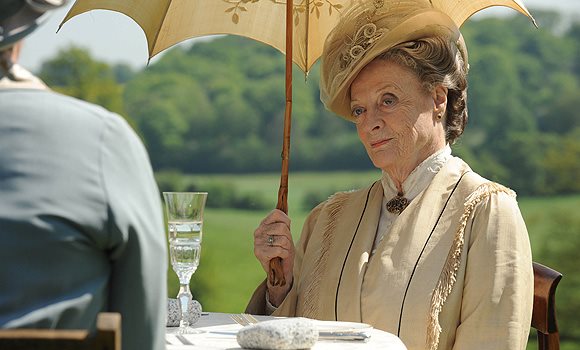
Violet Crawley (Maggie Smith)
“You Americans never understand the importance of tradition,” Violet tells Martha Levinson (Shirley MacLaine), mother of Cora Crawley (Elizabeth McGovern).
“Yes we do,” Martha replies. “We just don’t give it power over us. History and tradition took Europe into a World War. Maybe you should think about letting go of its hand.”
The Dowager fights battles of ego as the series’ staunchest opponent to progress. She holds tightly to tradition and the luxuries it brings – she wins the flower contest every year and she’s in charge of the town hospital not because of her abilities, but because of custom. Most of her battles are ultimately lost as she struggles against the changing tide. As a television series about change, Downton Abbey needs a character like Violet to serve as its counter-point and fight in the favor of all the wrong arguments, and so the audience can see how her own position shifts with time.
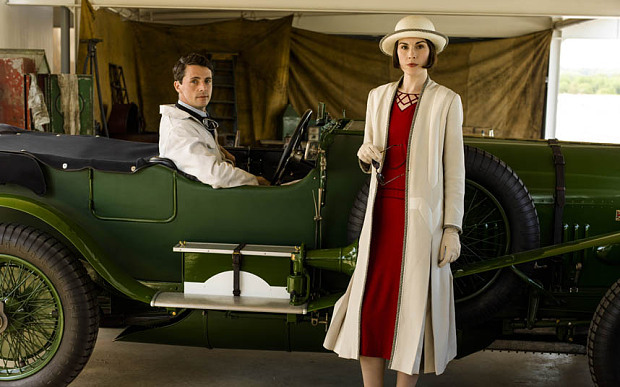
Henry Talbot (Matthew Goode) and Lady Mary (Michelle Dockery)
Part of Downton’s nuanced perspective on the English upper class stems from the experiences of its creator and lead writer, Julian Fellowes, who himself is a Conservative peer of the House of Lords with the distinguished titles of Baron Fellowes of West Stafford, Deputy Lieutenant of Dorset, Lord of the Manor of Tattershall in Lincolnshire, and President of the Society of Dorset Men. His wife, Emma Joy Kitchener, now Lady Emma Fellowes, was a lady-in-waiting to HRH Princess Michael of Kent. He has a deep understanding of the aristocratic past because he is part of this world’s modern form.
Downton Abbey clearly argues in favor of progress, aware that change is inevitable and that long-standing societal structures need to be adaptable in order to withstand the test of time. But it also understands that change can be a challenge and that tradition does have some value. Rather than belittling its conservative characters and championing its progressive characters (or vice versa), Downton makes both sides flawed and sympathetic; after all, fear of change and the unfamiliar is just as much a part of modern life as it was back then.

